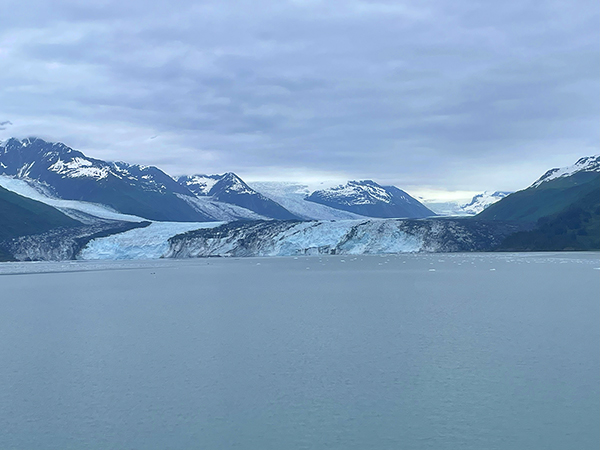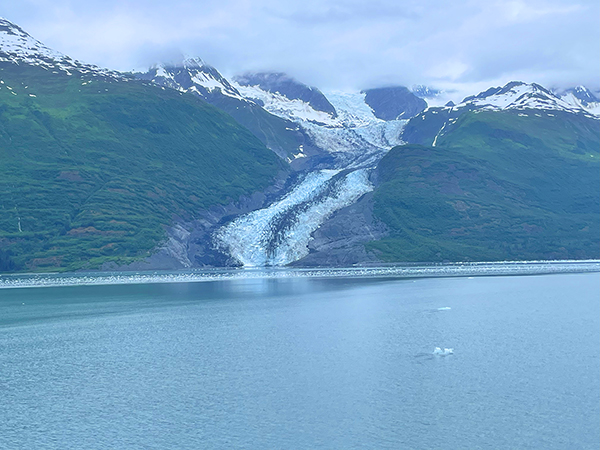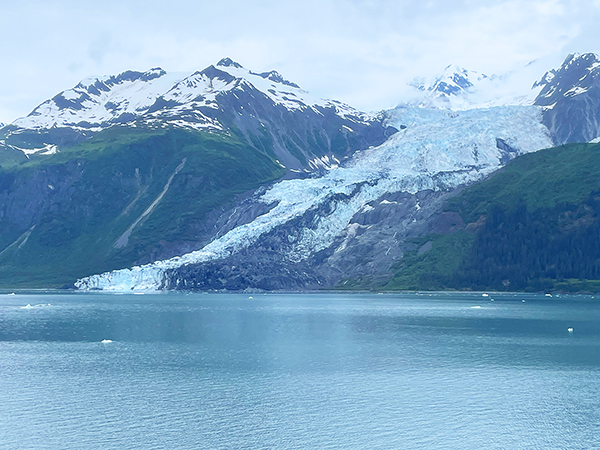

|
|
 |
 |
 |
|
July 18, 2025 Marti Eicholz No place has more active glaciers and ice fields than Alaska. An estimated 100,000 glaciers range from tiny bowl-like shaped glaciers to huge valley glaciers. Dramatic views of glaciers calving into the sea and the surrounding snow-capped mountains are highlights of our Alaskan itinerary. College Fjord, located in the northwestern part of Prince William Sound, cut twenty-five miles into the heart of the rugged Chugach Mountains. College Fjord, a twenty-mile long, narrow arm of the sea and its surrounding snow-capped mountains dwarf the size of The Odyssey. The fjord was discovered and named during the 1898 Harriman Expedition, which included professors from Harvard and Amherst. Many of the glaciers are named after prestigious Ivy League American East Coast universities like Harvard, Yale, Vassar, Amherst, Barnard, Bryn Mawr, Smith, and Williams. The glaciers on the northwest side of the fjord are named after women's colleges, while those on the southeast side are named after men's colleges. Naming the glaciers after universities was a significant event in the study of Alaskan natural history, adding a unique historical dimension to the areaís appeal. College Fjord is home to unique collection of glaciers, five tidewater glaciers, which are glaciers that terminate at the ocean, as well as five large valley glaciers and dozens smaller ones. College Fjord's compact size allows for excellent viewing opportunities, with vantage points offering views of up to eight glaciers at once. Some glaciers have retreated since the original Harriman Expedition. Not Harvard. Harvard is 1 1/2 miles wide, 225 feet high, stretching below the waterline up to about 120 feet, and reaching back to the Chugach Icefield nearly twenty-four miles away. This giant College Fjord is slowly advancing, calving (where large chunks of ice break off and fall into the water with a loud roar) tons of ice into the Fjord each day. These glaciers parade down, some of them 3,700 feet to the mile, from the steep mountains. No place has such a density of tidal glaciers. The waters around College Fjord are a haven for wildlife, including whales, sea lions, bald eagles, and various bird species. Harbor seals haul out on the ice floes. Large rafts of sea otters groom their luxuriously dense fur, slip beneath the surface to dine on crab, or float with their babies nestled on their chests, and watch with curiosity as we pass by. Unlike mountain glaciers, climate change is not the major influence on the advance or retreat of tidewater glaciers. Factors such as fjord depth, buoyancy, ice thickness, and iceberg calving rates influence the position of the glacierís terminus more strongly than climate does. Both the Harvard and Yale Glaciers originate from the same snowfield, the Harvard Glacier, the largest in College Fjord, known for its dramatic calving events, has advanced over the last century, while the Yale Glacier has retreated. The Odyssey continues its journey along a scenic waterway, a truly awe-inspiring landscape, combining stunning, towering mountains, impressive tidewater glaciers, abundant wildlife, lush forests, and the vastness of Prince William Sound. |
|
Copyright © 2025 All rights reserved |